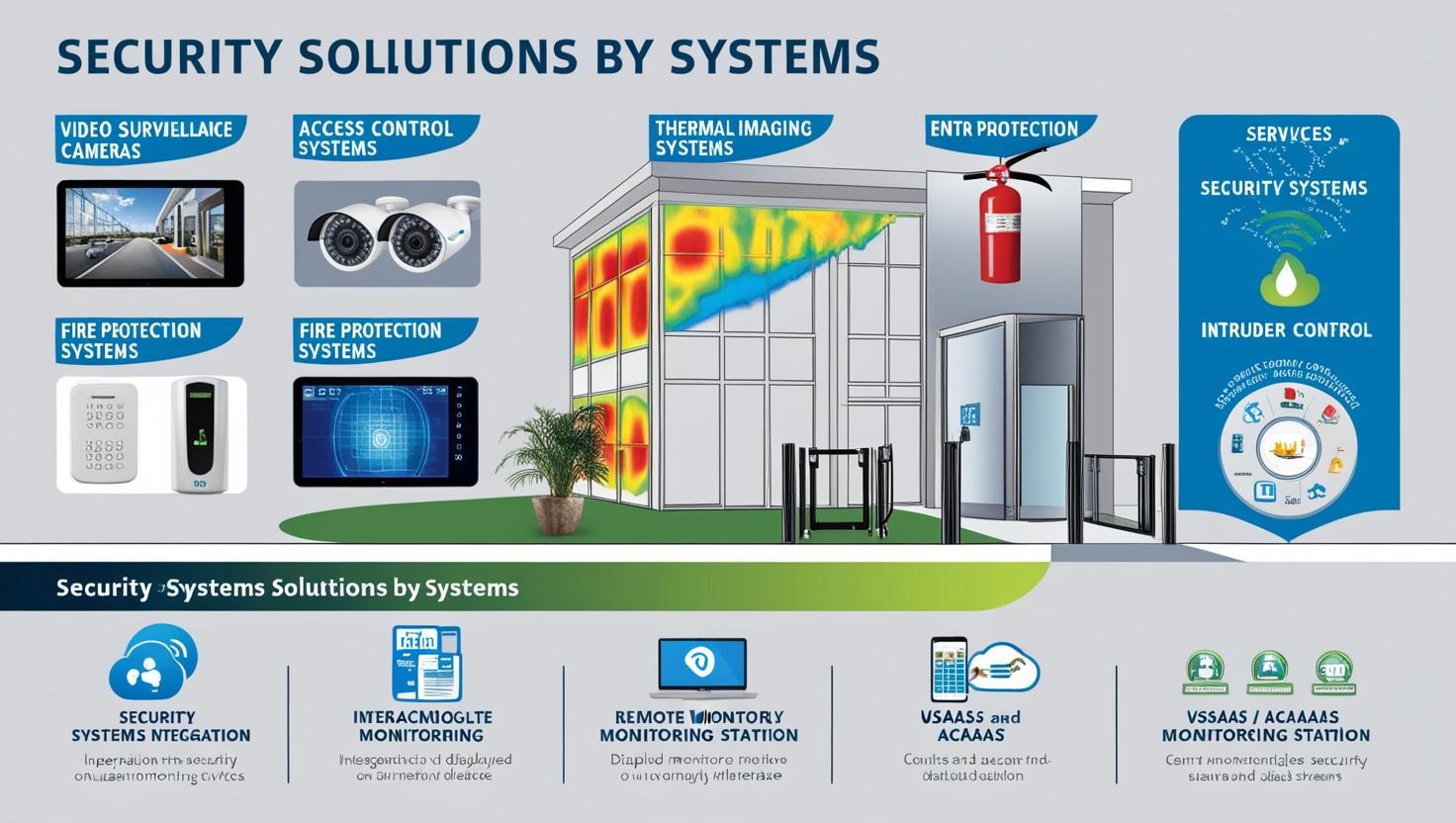In an era where safety and risk mitigation are paramount, the global security solutions market is witnessing significant growth. Organizations, governments, and individuals are increasingly adopting integrated security systems and services to protect assets, people, and critical infrastructure. From traditional fire protection and surveillance to advanced biometric systems and cloud-based services, the market is evolving rapidly to meet rising safety demands worldwide.
Rising Safety Concerns Driving Market Demand
Urbanization, industrialization, and increasing incidents of cyber-physical threats have made security a top priority across sectors. The need to safeguard people, property, and information has led to a surge in demand for advanced security solutions. Facilities ranging from corporate offices and hospitals to critical infrastructure such as airports and power plants are deploying a combination of fire protection systems, video surveillance, electronic access control, and intrusion alarms to ensure comprehensive safety.
Natural disasters, accidents, and security breaches are also influencing organizations to adopt preventive and real-time monitoring solutions. This heightened awareness is fueling growth in both hardware-based systems and service-oriented offerings like VSaaS (Video Surveillance as a Service) and ACaaS (Access Control as a Service).
Download PDF Brochure @ https://www.marketsandmarkets.com/pdfdownloadNew.asp?id=701

Technology-Driven Transformation
The security solutions market is no longer limited to standalone systems. Modern security technologies integrate AI, IoT, and cloud computing to provide intelligent monitoring, predictive analytics, and automated response. Video surveillance systems now utilize machine learning and facial recognition, while thermal imaging cameras enhance real-time detection in high-risk environments.
Biometric solutions, including fingerprint, facial, iris, and voice recognition, are becoming standard in access management, ensuring secure entry while reducing reliance on traditional keys or cards. Multi-technology readers and electronic locks allow organizations to implement flexible, tiered security policies.
Simultaneously, fire protection technologies are being integrated with monitoring software for early detection and automated alerts, minimizing response times and mitigating potential damages. This convergence of hardware and software solutions is driving higher adoption rates across industries.
Cloud-Based Services and Remote Monitoring
A major trend shaping the market is the shift toward cloud-based security services. VSaaS and ACaaS enable organizations to manage their security infrastructure remotely, access real-time analytics, and scale operations without heavy upfront investments. Remote monitoring services provide continuous surveillance and incident response, which is especially critical for geographically dispersed facilities and industrial operations.
Cloud-based deployments also facilitate predictive maintenance, data-driven insights, and integration with other enterprise systems. As organizations increasingly adopt hybrid security models combining on-premises systems with cloud services, demand for these offerings is projected to accelerate in the coming years.
Market Segmentation and Key Applications
The global security solutions market spans multiple sectors, including commercial, industrial, residential, government, and critical infrastructure. Each segment has distinct requirements: commercial and retail facilities focus on access control and video surveillance, while industrial and critical infrastructure sites prioritize intrusion detection, thermal imaging, and fire protection systems.
Emerging applications in healthcare, transportation, and smart cities are driving further growth. Smart buildings now integrate security systems with building management platforms, offering centralized control over access, monitoring, and emergency response. This convergence of technology enhances both operational efficiency and occupant safety.
Challenges and Opportunities
Despite robust growth, the security solutions market faces challenges such as high installation costs, interoperability issues between legacy and modern systems, and concerns over data privacy in cloud-based services. However, these challenges also present opportunities for innovation. Companies offering modular, scalable, and interoperable solutions are well-positioned to capture market share.
In addition, regulatory frameworks and industry standards around safety and data protection are encouraging investments in certified and reliable security solutions, further driving market adoption.
Future Outlook
The global security solutions market is poised for continued growth over the next decade. Increasing safety awareness, technological advancements, and the rising need for integrated security across industries are key drivers. Market forecasts indicate strong adoption of cloud-based services, AI-powered analytics, and advanced biometric solutions as organizations seek to create safer, more secure environments.
As threats evolve, security solutions are transitioning from reactive measures to proactive, intelligent systems capable of predicting and mitigating risks in real time. The future of security is not only about protecting assets but also about enhancing operational efficiency, resilience, and trust across all sectors.:
The security solutions market is entering a phase of rapid expansion driven by technological innovation and escalating safety demands. Organizations that invest in integrated, intelligent, and scalable solutions are not only protecting their assets but also positioning themselves at the forefront of a safer, smarter, and more resilient future.
